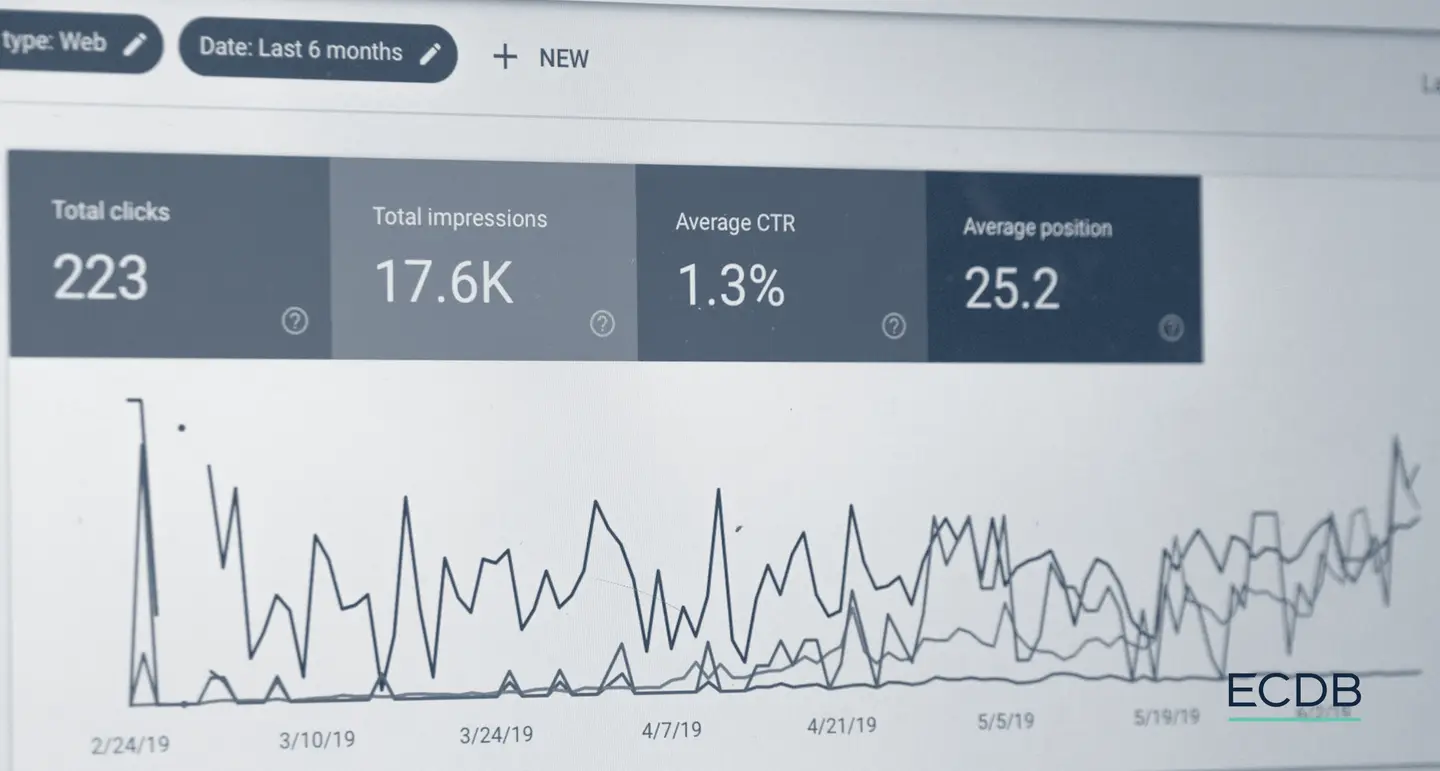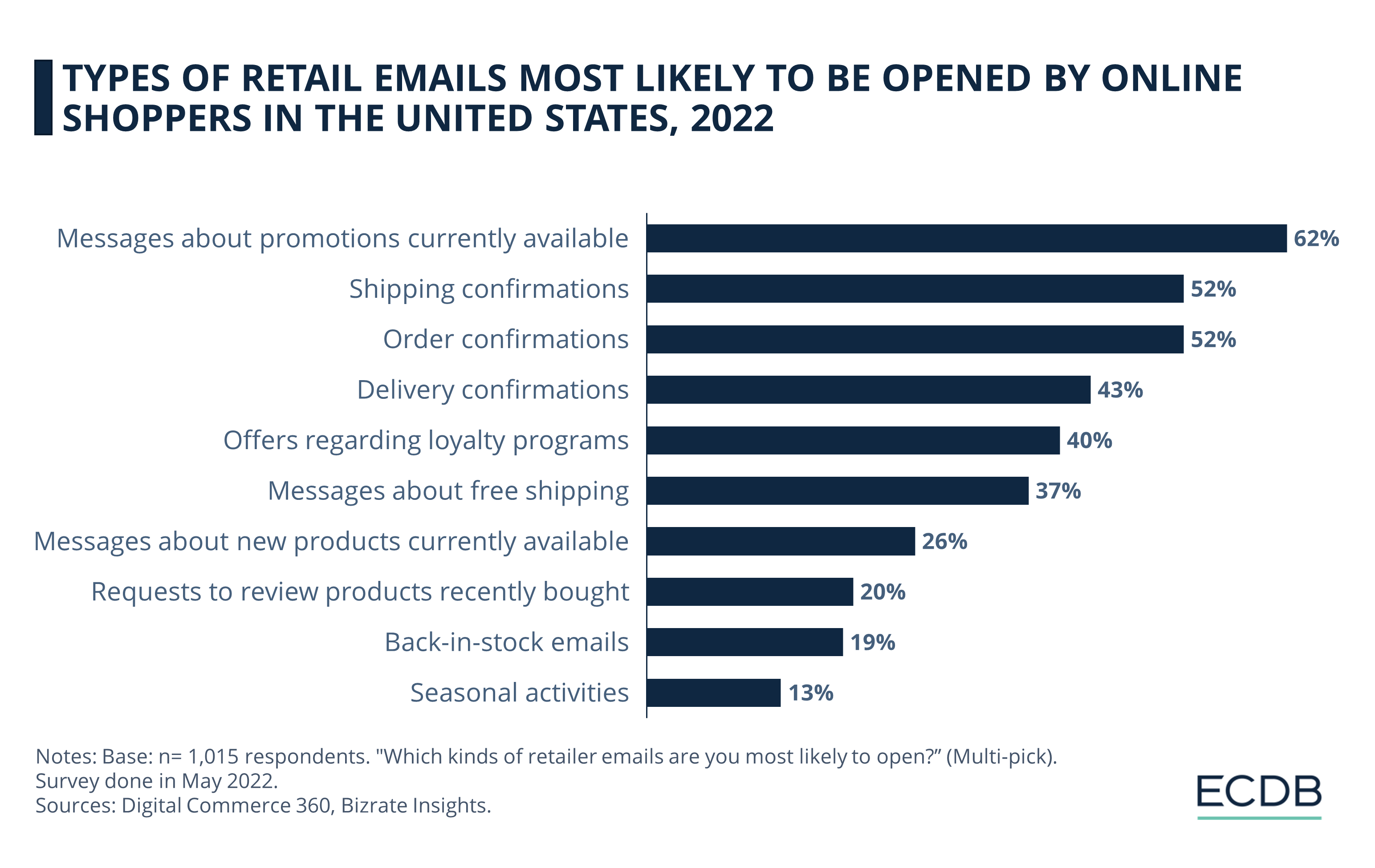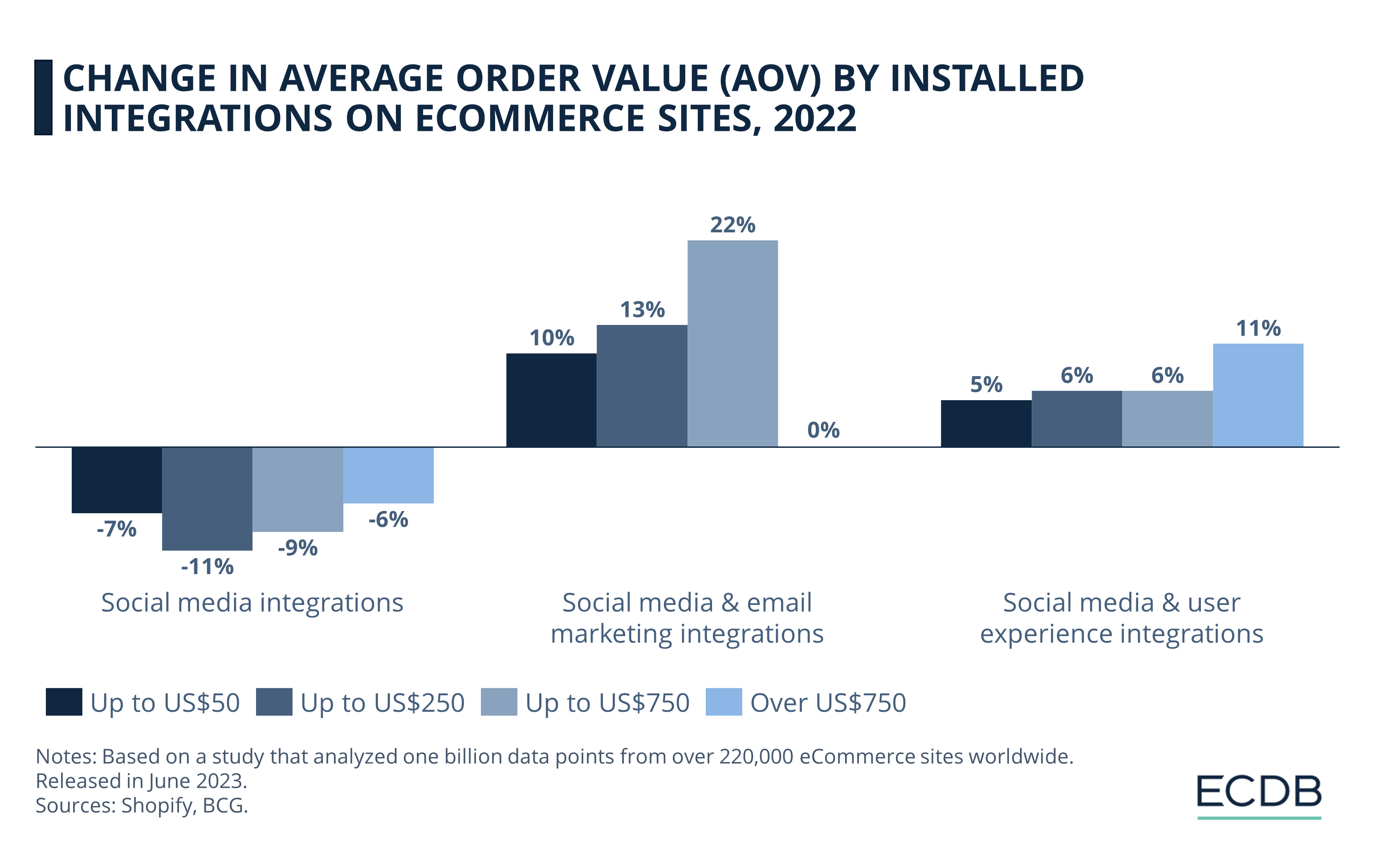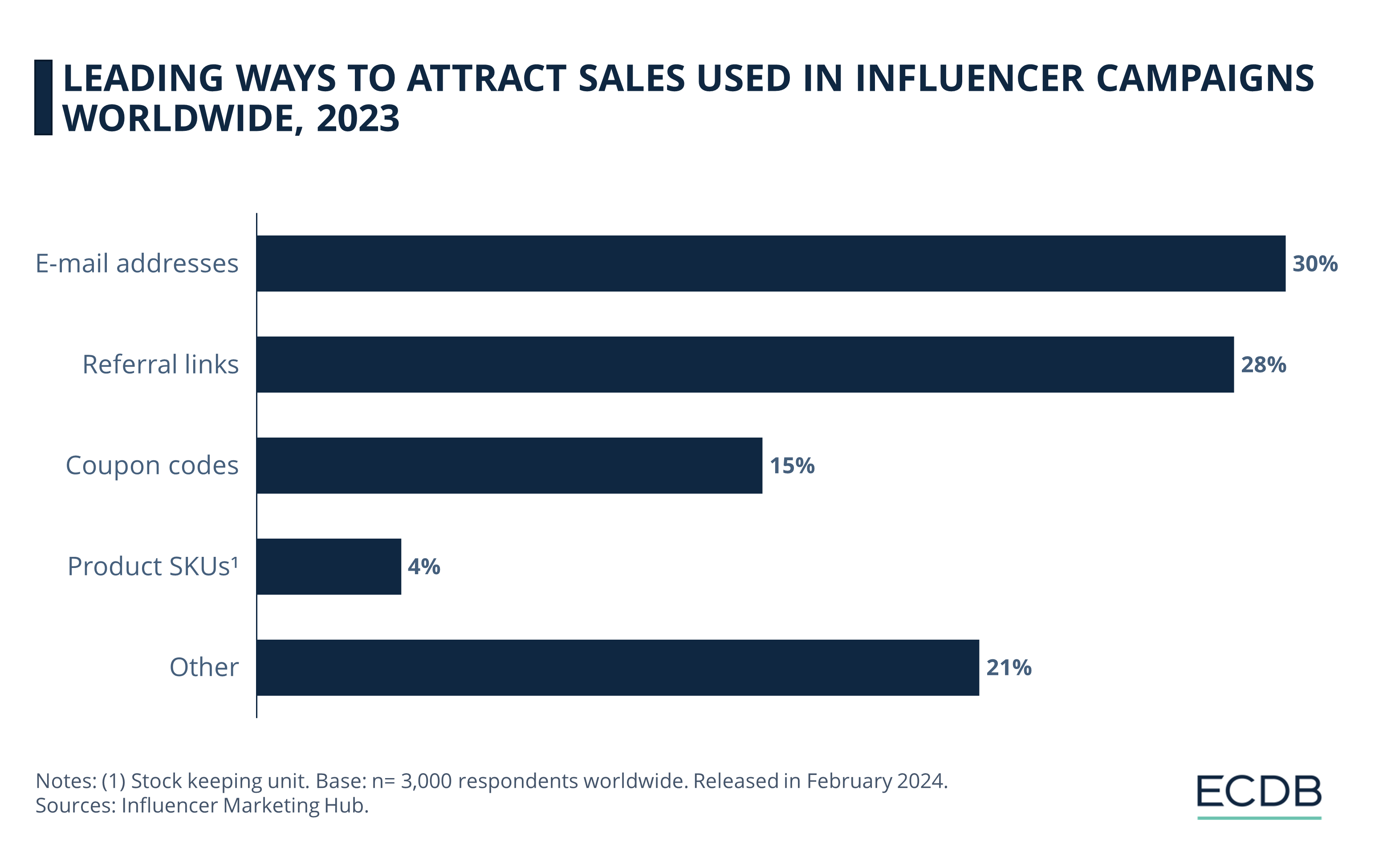eCommerce: Email Marketing
eCommerce Email Marketing: Definition, Types & Strategies
Transform casual browsers into loyal customers with eCommerce email marketing strategies. Read on to learn how to do that for maximum engagement and sales.
Article by Cihan Uzunoglu | June 13, 2024
Email Marketing in eCommerce: Key Insights
Versatile Tool: eCommerce email marketing effectively drives sales and builds customer relationships through transactional, promotional, and lifecycle emails, each with specific strategies to engage and retain customers.
Effective Strategy: To create a successful eCommerce email marketing strategy, select a suitable ESP, build your email list early, ensure legal compliance, automate welcome emails, send regular promotional emails, use segmentation, set up abandoned cart emails, reactivate inactive subscribers, gather feedback, and leverage transactional emails.
Automated Advantage: Automated emails significantly outperform manual campaigns in open rates, click rates, and conversion rates, making them essential for maximizing email marketing effectiveness.
Improving Metrics: Despite rising open rates, eCommerce email marketing still faces challenges in improving click and conversion rates, which can be addressed with personalized content, better design, and a seamless user experience.
Ever wondered how some online stores keep you coming back with perfectly timed emails? Imagine engaging your customers with personalized messages that drive sales and build loyalty, all while saving time with automation. eCommerce email marketing makes this possible by sending targeted emails that prompt actions like completing a purchase or discovering new products.
But what types of emails work best? How can you transform casual browsers into loyal customers? From transactional emails that provide essential order updates to promotional messages showcasing your latest deals, the strategies vary.
But first, let’s get our definition straight.
What is eCommerce Email Marketing?
eCommerce email marketing is a powerful tool used by online businesses to communicate with their customers. It involves sending targeted emails to potential and existing customers to achieve various goals, such as driving sales, building relationships, and enhancing customer engagement.
This type of marketing includes different email types like transactional emails (order confirmations, shipping updates), promotional emails (discounts, new product launches), and lifecycle emails (welcome series, abandoned cart reminders). By using email marketing effectively, eCommerce businesses can maintain a strong connection with their audience and encourage repeat purchases.
Types of eCommerce Email Marketing
eCommerce email marketing is a versatile tool that can achieve various goals, from driving sales to building customer relationships. Here are some of the most effective types of email marketing used by eCommerce businesses.
Transactional Emails
Transactional emails are sent during checkout and other purchasing actions, providing key information to customers. These emails tend to have higher open rates than the average.
Order Confirmation Emails: Confirm a customer's purchase and provide details such as expected delivery date, shipping address, and customer support information. They can also suggest related products or offer discounts for future purchases. For example, some companies send order confirmations inviting customers to add more items before shipping.
Shipping Confirmation Emails: Sent once a package is shipped, these emails include tracking information and delivery dates. They can promote referral programs or suggest complementary products.
Check-in Emails: Post-purchase emails asking for customer feedback via surveys or rating systems help improve customer satisfaction and business processes. One example of this can be sending surveys to gather customer feedback.
Thank You Emails: Express gratitude to customers, encouraging loyalty and offering additional engagement opportunities, such as coupons or links to your store. Thank you emails have higher engagement rates than general marketing emails.

Promotional and discount emails have the highest open rate among U.S. online shoppers at 62%, followed by shipping and order confirmations at 52%, and delivery confirmations at 43%, according to Digital Commerce 360. Loyalty program offers and free shipping messages also perform well, with 40% and 37% open rates, respectively. Although new product announcements, product review requests, and back-in-stock notifications have lower open rates, they remain crucial for customer engagement.
Promotional Emails
Promotional emails raise awareness for specific deals, new product launches, and seasonal offers. These emails drive sales and keep customers engaged with your brand.
New Product Launch Emails: Introduce new products to your subscribers, often with priority access or exclusive offers. Businesses can, for instance, use these emails to announce new products.
Time-Sensitive Deals: Create urgency with discounts on items related to customers' previous purchases. Merchants use subscriber-only discounts to boost sales during events like Black Friday.
Subscriber-Only Discounts: Offer exclusive discounts to your email subscribers to build loyalty and encourage repeat purchases.
Seasonal Promotions: Notify subscribers of special offers based on upcoming holidays or seasonal events. It is common practice to use email banners to promote shopping days sales with significant discounts.
Newsletters: Regular updates on your brand, products, and industry news help maintain customer relationships without relying solely on promotions. Many businesses use newsletters to share, for instance, their sustainability missions.
The Digital Commerce 360 study mentioned earlier found that email marketing is still the most effective tactic for engaging consumers. Nearly 45% of online shoppers reported being influenced by general emails from retailers, which keep customers engaged and in a shopping mindset.

Lifecycle Emails
Lifecycle emails, or "triggered" emails, are personalized based on customer actions and their position in the customer lifecycle. They are highly targeted and effective.
Welcome Emails: Sent to new subscribers or customers, these emails introduce your brand and often include a special offer to encourage initial purchases. Many companies offer discounts in their welcome email.
Abandoned Cart Emails: Remind customers of items left in their cart, often with incentives to complete the purchase. These emails can recover 5% to 11% of otherwise lost sales. One example can be offering limited-time free shipping to encourage completion of abandoned carts.
Win-Back Emails: Re-engage lapsed customers with special offers or incentives to return. It is common for merchants to offer discounts for returning customers who have been inactive.
Browse Abandonment Emails: Target potential customers who browsed products but did not add them to their cart, encouraging them to reconsider. One example would be sending personalized browse abandonment emails.
Upsell and Cross-Sell Emails: Promote complementary or upgraded products based on customers' previous purchases to increase order value. Many use upsell emails to encourage subscriptions, offering savings and extra benefits.
Like this insight? It is based on our regularly updated rankings. With our retailer and country rankings, you can learn valuable information about your specific market. Our product category rankings and benchmarks allow you to see where various businesses are currently evolving. This information can aid in your decision-making, whether you are a business developer, shop owner, or CEO of a large eCommerce brand. Stay a step ahead of the market with ECDB.
Best eCommerce Email Marketing Strategy
There is no one-size-fits-all eCommerce email marketing strategy that works universally. Each business must evaluate its unique needs and resources to develop the most effective approach.
However, there are fundamental steps every merchant can follow to succeed in email marketing. These basic steps can serve as a foundation for creating a tailored strategy that engages your audience and drives sales. By considering these essential components, businesses can build a comprehensive and effective email marketing strategy that meets their specific goals and requirements.
Here are the key steps to guide you in crafting an effective strategy.
1. Choose an Email Service Provider (ESP)
Select a well-reviewed ESP that fits your needs, such as pricing, drag-and-drop editors, and email templates. Popular options include Klaviyo, Privy, Omnisend, and Shopify Email. Don't worry about finding the "perfect" ESP — you can always switch providers later if needed.
2. Start Building Your Email List
Begin collecting email addresses from Day 1. Use various methods such as pop-up forms, embedded signup forms in your site’s footer, and promoting your newsletter on social media. Consider offering incentives like discounts or free shipping to encourage sign-ups.

Combining social media and email marketing integrations led to a significant increase in online order values. A BCG & Shopify study shows that eCommerce sites with both integrations saw a 22% increase in orders up to US$750. However, social media integrations alone did not lead to increased average order values.
3. Send Emails Legally
Ensure your email marketing complies with regulations like CAN-SPAM, GDPR, and CASL. These laws protect consumer privacy and prevent spam, so familiarize yourself with their requirements to avoid hefty fines.
4. Welcome New Subscribers Automatically
Welcome emails have the highest engagement rates, so send them immediately after a user subscribes. Use these emails to set the tone, express appreciation, and encourage the first purchase with a discount code.
5. Regularly Send Promotional Emails
Regular promotional emails keep your audience engaged and drive sales. Aim for at least one email per month, but weekly or biweekly is ideal. Use ready-made email templates to save time and maintain consistent branding.
6. Use Segmentation to Tailor Communication
Segment your email list based on demographics, psychographics, and behavior to create personalized content. Common segments include high spenders, loyal customers, trendsetters, one-time buyers, and recent buyers. Tailored emails improve engagement and conversion rates.

7. Retrieve Lost Sales with Abandoned Cart Emails
Set up abandoned cart emails to remind customers of items left in their cart, offering incentives to complete the purchase. Integrate your eCommerce platform with your email automation tool to automate this process and recover potentially lost sales.
8. Reactivate Inactive Subscribers
Win-back campaigns aim to re-engage inactive subscribers. Send automated reminders to those who haven’t interacted with your emails for a while. If they remain unengaged, consider removing them from your list to maintain list hygiene and improve deliverability.
9. Ask for Feedback
Encourage customers to provide feedback after their purchase. Send automated emails with surveys or feedback forms to gather insights and improve your products and services.
10. Use Transactional Emails to Build Loyalty
Transactional emails, such as order confirmations and shipping updates, provide essential information and reassurance to customers. Use these emails to reinforce your brand’s personality and encourage further engagement.
Automated Emails vs. Manual Campaigns: Which One is Better?
To maximize email marketing, automation is essential. Automated emails, triggered by user actions like sign-ups or abandoned carts, accounted for 41% of all email orders in 2023, despite representing only 2% of emails sent. 2023 data from Omnisend goes on to show that, remarkably, 88% of these orders originated from welcome, browse abandonment, and cart abandonment emails.

Automated emails consistently outperformed campaign emails, boasting higher open rates (42.1% vs. 25.2%), click rates (5.4% vs. 1.5%), and conversion rates (1.9% vs. 0.07%). This demonstrates that implementing and optimizing automated emails, especially back-in-stock, welcome, and cart abandonment types, can significantly boost sales and engagement.
eCommerce Email Marketing Benchmarks
Looking at the broader eCommerce email marketing benchmarks from 2020 to 2023, we see a consistent increase in open rates, from 10.1% in 2020 to 25.1% in 2023. Having remained relatively stable since 2020, click rates and conversion rates stood at 1.5% and 0.07% respectively by 2023. Omnisend data further shows that another important metric, click-to-conversion, was at 4.6% last year.
This suggests that while more people are opening emails, getting them to click and convert remains a challenge. Improving these metrics requires personalized content, better email design, and a seamless user experience on the website. These steps can help turn high open rates into actual sales, addressing the gap between engagement and conversion.
eCommerce Email Marketing:
Closing Thoughts
Email marketing remains a crucial tool for eCommerce businesses, even as social media platforms grow. Experts agree that email marketing is here to stay, thanks to its direct engagement and high ROI. Trends like AI-driven personalization and interactive content will enhance its effectiveness, making it even more valuable.
Abandonment of third-party cookies is another factor that might affect the importance of email marketing in eCommerce, due to the need for privacy-conscious strategies.
As you refine your strategy, consider the benchmarks and insights discussed. How will you adapt to these dynamic trends and leverage email to drive sales and build lasting customer relationships? By staying ahead of these trends and optimizing your email campaigns, your business can achieve even greater success in the world of online shopping.
Sources: GetResponse, Abmatic, SendPulse, Maropost, Content Marketing Institute, FluentCRM, Shopify, Digital Commerce 360, Omnisend, Statista, ECDB

Click here for
more relevant insights from
our partner Mastercard.
Related insights
Deep Dive
The Global B2B eCommerce Market: Why It Is Beneficial to Sell to Other Businesses
The Global B2B eCommerce Market: Why It Is Beneficial to Sell to Other Businesses
Deep Dive
Why Did Amazon Fail in China: Local Competition Defeats the Retail Giant
Why Did Amazon Fail in China: Local Competition Defeats the Retail Giant
Deep Dive
eCommerce in Indonesia: Revenues Projected to Cross US$100 Billion in 2025
eCommerce in Indonesia: Revenues Projected to Cross US$100 Billion in 2025
Deep Dive
Top 10 Online Shopping Sites in the USA: Amazon, Walmart, Apple
Top 10 Online Shopping Sites in the USA: Amazon, Walmart, Apple
Deep Dive
Online Ticketing 2024: Event Pricing, Market Size, & Trends
Online Ticketing 2024: Event Pricing, Market Size, & Trends
Back to main topics